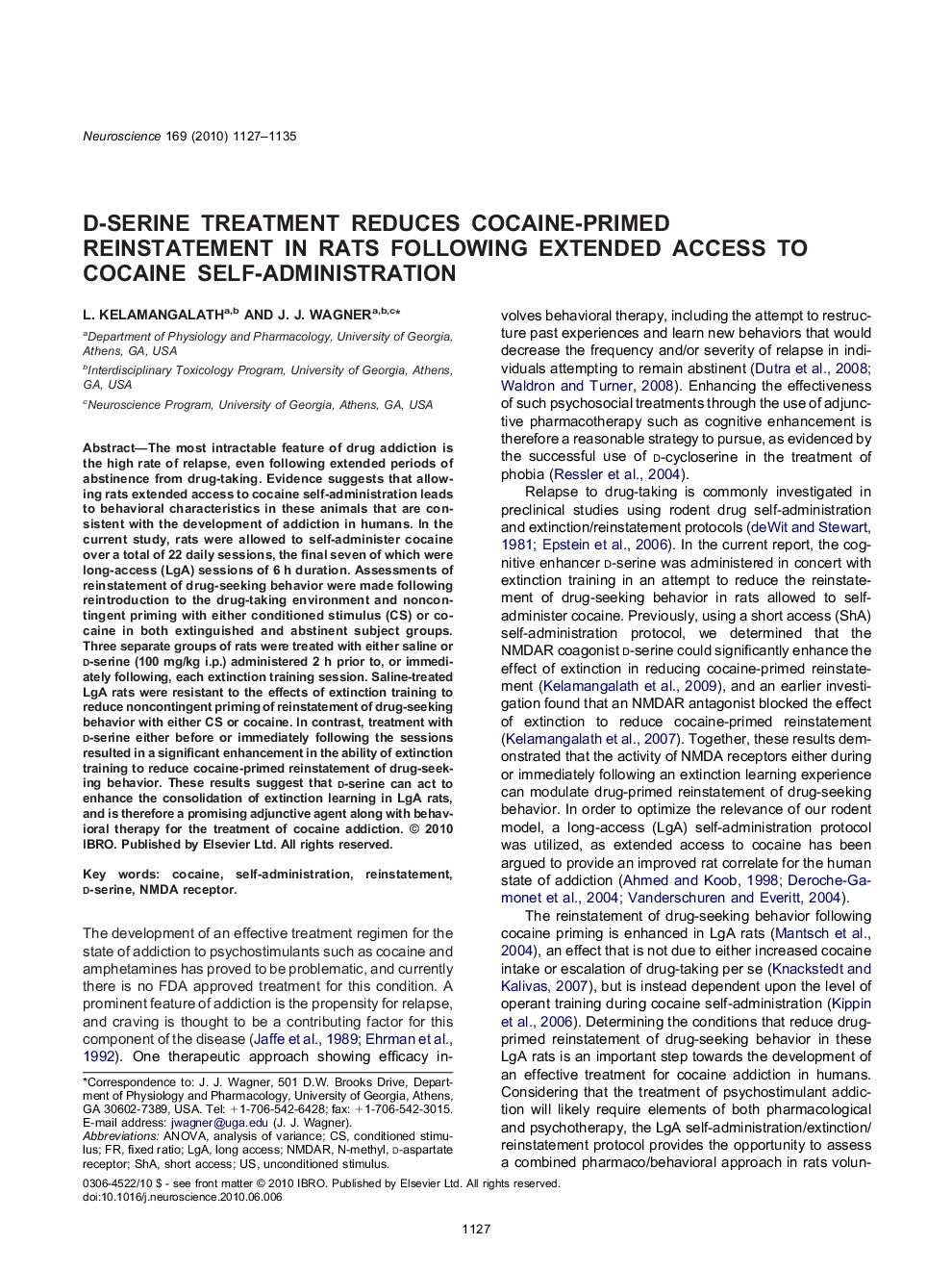| کد مقاله | کد نشریه | سال انتشار | مقاله انگلیسی | نسخه تمام متن |
|---|---|---|---|---|
| 6276999 | 1295747 | 2010 | 9 صفحه PDF | دانلود رایگان |
عنوان انگلیسی مقاله ISI
D-serine treatment reduces cocaine-primed reinstatement in rats following extended access to cocaine self-administration
دانلود مقاله + سفارش ترجمه
دانلود مقاله ISI انگلیسی
رایگان برای ایرانیان
کلمات کلیدی
NMDARD-SerineLGANMDA receptor - NMDA گیرندهReinstatement - بازگرداندنanalysis of variance - تحلیل واریانسANOVA - تحلیل واریانس Analysis of varianceself-administration - خود ادارهSHA - شاunconditioned stimulus - محرک بی قید و شرطconditioned stimulus - محرک شرطیfixed ratio - نسبت ثابتCocaine - کوکائین
موضوعات مرتبط
علوم زیستی و بیوفناوری
علم عصب شناسی
علوم اعصاب (عمومی)
پیش نمایش صفحه اول مقاله

چکیده انگلیسی
The most intractable feature of drug addiction is the high rate of relapse, even following extended periods of abstinence from drug-taking. Evidence suggests that allowing rats extended access to cocaine self-administration leads to behavioral characteristics in these animals that are consistent with the development of addiction in humans. In the current study, rats were allowed to self-administer cocaine over a total of 22 daily sessions, the final seven of which were long-access (LgA) sessions of 6 h duration. Assessments of reinstatement of drug-seeking behavior were made following reintroduction to the drug-taking environment and noncontingent priming with either conditioned stimulus (CS) or cocaine in both extinguished and abstinent subject groups. Three separate groups of rats were treated with either saline or d-serine (100 mg/kg i.p.) administered 2 h prior to, or immediately following, each extinction training session. Saline-treated LgA rats were resistant to the effects of extinction training to reduce noncontingent priming of reinstatement of drug-seeking behavior with either CS or cocaine. In contrast, treatment with d-serine either before or immediately following the sessions resulted in a significant enhancement in the ability of extinction training to reduce cocaine-primed reinstatement of drug-seeking behavior. These results suggest that d-serine can act to enhance the consolidation of extinction learning in LgA rats, and is therefore a promising adjunctive agent along with behavioral therapy for the treatment of cocaine addiction.
ناشر
Database: Elsevier - ScienceDirect (ساینس دایرکت)
Journal: Neuroscience - Volume 169, Issue 3, 1 September 2010, Pages 1127-1135
Journal: Neuroscience - Volume 169, Issue 3, 1 September 2010, Pages 1127-1135
نویسندگان
L. Kelamangalath, J.J. Wagner,